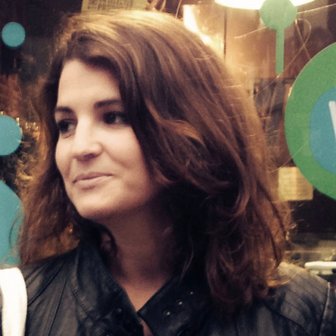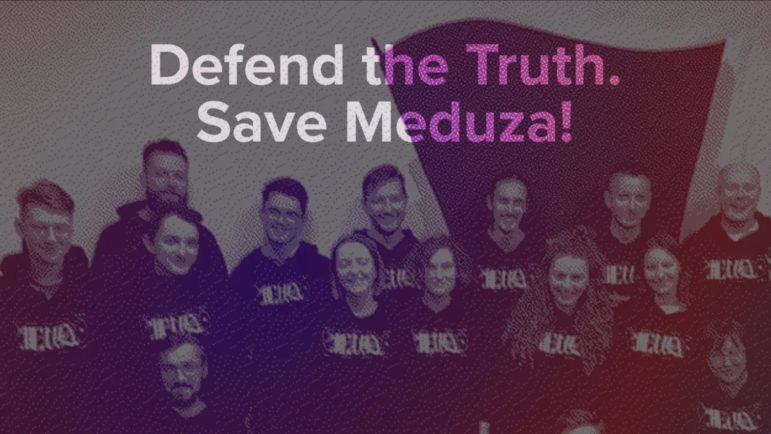

Image: Shutterstock
Solving Investigative Journalism’s ‘Profit Puzzle’ — From Diversification to Independence
How investigative journalism can pay for itself, independent of grants and philanthropy, is an ongoing challenge — particularly because producing impactful journalism is often not enough to break even or make it profitable.
“By 2024, we can all acknowledge that the business model of ‘build it and they will come’ doesn’t work,” said Bilal Randeree, managing director of the Media Development Investment Fund (MDIF), which invests in media companies, many in Africa and the Middle East. “Good quality journalism and content is not enough, unfortunately, to help us build sustainable organizations,” he added.
At the 2024 IPI World Congress in Sarajevo, Randeree moderated a panel discussion on the “investigative journalism profit puzzle” as part of the conference’s focus on media innovation. It brought together experts — whose roles combine journalism with business development or fundraising — to discuss their experiences with diversifying revenue as well as their successes, failures, and how they have balanced revenue and independence.
The conversation touched on the role of grants in funding independent outlets — which, while not the perfect solution, remain an important revenue stream for many news organizations. But the key takeaway was that various forms of diversification have helped independent outlets in Brazil, Romania, Senegal — as well as the Associated Press (AP) investigative team — pay for their investigative journalism.
Diversifying Revenue
As vice president for news investigations, enterprise, partnerships, and grants at the AP, Ron Nixon straddles the business and news sides of journalism. He said that applying a deliberate mindset to the investigative reporting team has helped it find ways to make its journalism profitable and less of a drain on the core “mothership” AP budget. “Investigative journalism is super expensive… and it’s a big team of people. Previously, the focus was simply on ‘do great journalism’ without thinking about ‘What could we do with the journalism to help fund it, so it doesn’t create a huge hole in the budget?’” he explained.

Serving as vice president for news and investigations, enterprise, partnerships, and grants, Ron Nixon’s role combines the business and news sides of journalism at AP. Image: Screenshot, AP
“Now, we look at the investigative team as a start-up… a separate entity within an existing news organization,” he added. They do data distribution to customers and sell video footage to broadcasters. Nixon also oversees AP Productions, which works with Hollywood studios to turn investigations into films, documentaries, and podcasts. One recent partnership with other news outlets resulted in the Oscar-winning documentary “20 Days in Mariupol”— the venerable news agency’s first Academy Award.
Alina Păduraru, who started as the first intern at Recorder, a Bucharest-based independent video publication, is now the executive manager of the Recorder Community Association, the NGO that oversees the donations that make up 90% of Recorder’s revenue. The rest of its revenue comes from sponsorships from private companies that can choose to redirect 20% of their taxes per profit to an NGO, followed by grants, and, finally, advertising.
But when Recorder launched in 2017, advertising was the largest piece of the funding pie. “This shift from advertising to donations was intentional, and a consequence of the enormous support we received from our audience,” said Păduraru. “But it was also our belief that investigations should be financed by donations.”
Juliana Mori, co-founder of InfoAmazonia — which is based in Brazil but is strongly networked with the eight other Amazon countries — explained that they started diversifying their activities in response to various challenges, in particular covering such a huge geographical area. “Nowadays, our revenue is diversified into three core activities: investigative journalism, training and education, and building networking capacities,” said Mori.
The latter two help fund their investigative journalism. And because spatial analysis, maps, and data are a large component of their investigative journalism, they can do a lot of investigative journalism “without going on the ground,” said Mori.
Hamadour Tidiane Sy, a seasoned Senegalese journalist formerly with BBC, AFP, and Bloomberg, is the founder of the independent online site Ouestaf News. At first, he funded it through his freelance journalism and training work, and then transitioned to an “awkward business model” of asking fellow journalists to donate time to generate more stories. When the platform began to earn awards and recognition, such as for its COVID-19 reporting, it opened up new funding opportunities, Tidiane Sy said. “The ‘profit puzzle’ is becoming interesting now for us, because of grants,” he added. Currently, 85% of Ouestaf News revenue comes from one foundation’s grant, with the remaining 15% coming from smaller grants and partnerships.

Senegalese journalist Hamadou Tidiane Sy founded Ouestaf News to cover West African and ECOWAS countries. Image: Screenshot, Ouestaf News
Fail Again, Fail Better
Instead of focusing only on successes, Randeree also asked the panelists to highlight some initiatives or experiments that failed and whether they were able to identify why. “It’s hard for people to learn from when things go well in an organization,” he noted.

Bilal Randeree, managing director of the Media Development Investment Fund, moderated the panel. Image: Screenshot, LinkedIn
Păduraru shared Recorder’s plan to take over a successful newsletter that had been run by a magazine that closed, which didn’t go as expected. “They didn’t want to give us the newsletter, so we decided to create one from scratch… We had a situation where we saw an opportunity, but we didn’t analyze well enough the need that we had,” said Paduraru. “Was it truly our need, or not?” Recorder now has a successful newsletter, but the previous experience was “extremely painful” at the time, Păduraru recalled. “We lost a lot of time, money, and energy.” The lesson was not to embark on a big new project without proper planning.
Tidiane Sy shared that, looking back, he would’ve wanted to develop a more solid business plan from the outset. “The biggest mistake… is that I started Ouestaf News out of passion, thinking that it would work, but didn’t think of how,” he explained. “Good journalism doesn’t equal good money. People need to have a business model.” He also mentioned his frustration with trying out Google Ads. “If you’re doing one story a week, or a big investigation every three or four months, you can’t have enough clicks to get money out of Google Ads,” he noted.
Revenue vs. Independence
How to balance revenue and independence is part of the “puzzle” the panelists discussed — and they agreed the latter is non-negotiable.
For Recorder, independence and their loyal audience are closely linked.“Our biggest asset is trust and reputation,” said Păduraru. Recorder has strict rules regarding advertising and is transparent about it. “We publicly declared many times that we don’t accept advertising at all from specific companies… pharma, tobacco, alcohol, gambling. And we don’t take political advertising,” she said. “We explain in detail what we did with the money. Our audience is impressed by transparency.” Păduraru noted that after Recorder publishes its annual reports detailing where and how it has spent its money, the site sees a spike in donations.

Alina Păduraru joined Recorder as an intern but now combines a journalism role with fundraising and management. Image: Screenshot / X
A small percentage of Recorder’s revenue still comes from ads on its YouTube channel, which is its main publishing platform. But to maintain its independent reputation, the site suspended that funding stream in 2024 ahead of Romania’s presidential elections in September, because YouTube viewers were seeing election ads alongside Recorder’s video investigations. “We prefer not to have those ad revenues from YouTube if this is the situation,” Păduraru said.
Nixon echoed these points. He explained that AP has an elaborate process for making those decisions, with a scoring system for balancing certain funding sources with potential reputational harm. “There is some philanthropy we won’t take, because it doesn’t meet our standards. There is business we don’t do, because it doesn’t meet our standards… There is money left on the table at times, but we have to protect our biggest asset — our reputation for fact-based, non-partisan information,” he explained.
Mori said InfoAmazonia is transparent about who is funding their projects, and is mindful to avoid conflicts when they are co-publishing. For instance, when a larger news organization expressed interest in republishing InfoAmazonia’s work, the site’s team decided not to go ahead because the potential partner also accepts advertising from companies directly causing harm to the Amazon.
Tidiane Sy explained that in Senegal, you can easily fund a media site with advertising if you’re friends with politicians and powerful business people — but at the cost of your reputation. “They can support as long as you run a favorable story about them or one that hurts their enemies,” he said. “We can have new technology, we can have new approaches with collaboration, but the minute you lose independence, call it what you want, but it’s not journalism anymore,” he said.
To close the discussion, Randeree said independent media should regard similar outlets as allies — and focus on collaboration. “Small independent media regard each other as competitors. But [our competitors] are not those in the room with us,” he said. “It’s the bad actors. We can’t be strong in isolation. To grow, independent media needs to be in an environment where there is other strong independent media.”
Nixon added that publications should also look beyond the media business. “Journalism can be insular,” he said. “We can learn from other industries that have reinvented themselves. ‘How did they do that?’ Do some research and development. There isn’t one business model. What works for you will depend on where you are.”
Watch the full IPI panel on Investigative Journalism’s Profit Puzzle on YouTube below.
 Alexa van Sickle is an associate editor at GIJN, and a journalist and editor with experience across online and print journalism, book publishing, and think tanks. Before joining GIJN, she was a senior editor for the foreign correspondence magazine Roads & Kingdoms.
Alexa van Sickle is an associate editor at GIJN, and a journalist and editor with experience across online and print journalism, book publishing, and think tanks. Before joining GIJN, she was a senior editor for the foreign correspondence magazine Roads & Kingdoms.











